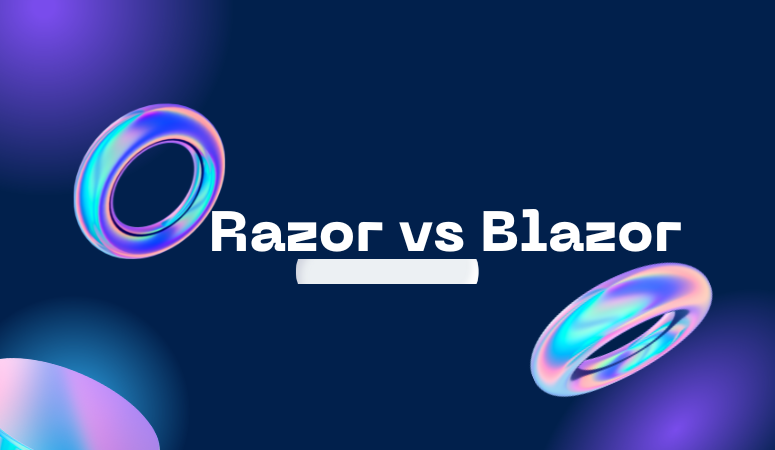Explore the differences between Razor vs Blazor, shedding light on their unique features and explaining their Pros and Cons. Uncover which one suits your development needs best.
Razor, a server-side markup language, empowers developers to dynamically craft web pages using HTML and embedded .NET server-side code. It generates web pages from Razor pages, which are template files written in either C# or VB. Razor seamlessly integrates into modern ASP.NET web applications, offering an alternative to traditional markup for generating application view components.
What is Razor?
Razor is a markup syntax used in ASP.NET to create dynamic web pages. It enables developers to embed C# code within HTML, making it easier to generate dynamic content and interact with server-side logic in web applications. Razor is concise and readable, facilitating the seamless integration of server-side code with HTML for efficient web development.
Blazor: Redefining Web Application Development
Blazor, a cutting-edge web application framework, revolutionizes the creation of interactive client-side interfaces using .NET programming languages. Functioning as single-page applications (SPA) within web browsers, Blazor leverages WebAssembly for client-side execution. This framework enables developers to build reusable, interactive web components with C#, HTML, and CSS, eliminating the need for JavaScript incorporation. Read also Shadow Slave Wiki.
Exploring the Harmony: Razor and Blazer’s Connection
Blazor maintains a robust relationship with Razor, evident in its nomenclature—a fusion of “browser” and “razor.” Both frameworks share the mission of web application creation using HTML and C#. Their open-source nature grants developers unrestricted access, allowing the seamless integration of Razor syntax in ASP.NET web applications.
Blazor excels in constructing flexible, interactive user interfaces through components, differentiating itself from Razor’s conventional use in building entire pages.
Unraveling the Dynamics: Razor Pages vs Blazor Server
Razor: Serving Entire Pages with MVC Precision
Razor seamlessly integrates within MVC applications, serving complete pages to browsers. Upon user interaction, a request triggers server-side processing, fetching Razor Views, combining data with markup, and presenting the entire rendered page.
Blazor: A Symphony of Components
In contrast, Blazor facilitates the creation of entire web pages through smaller components written in Razor syntax. Illustrated in Figure 2: Blazor in Action, Blazor WebAssembly (Blazor WASM) executes as a complete program, akin to Single Page Applications developed with JavaScript. The browser gains access to these components, enabling dynamic display, concealment, and updates in response to information and events.
Weighing the Pros and Cons: Razor vs Blazor
Benefits of Blazor
- Efficiency: Client-side Blazor executes .NET code directly in the browser through WebAssembly, ensuring speed and optimized network bandwidth usage.
- Syntax Unity: Utilizing the same syntax and logic as server-side languages, Blazor seamlessly integrates with all .NET libraries and tooling.
Drawbacks of Blazor
- Tooling Limitations: Limited .NET Tools and debugging support for client-side .NET applications.
- Server-Side Performance: The performance advantages of client-side Blazor are absent in server-side implementation.
Benefits of Razor
- Logical Insertion: Enables logical (conditional) insertion of C# code into webpages.
- Flexibility: Highly flexible, suitable for a wide range of applications.
- Organized Structure: Well-organized structure for enhanced readability.
Drawbacks of Razor
- JavaScript Dependency: Requires JavaScript for dynamic, client-side interactions.
- Complexity with Multiple Pages: Managing multiple self-contained pages might pose challenges.
Closing Thoughts
While Razor excels in handling API logic and server-side templating, it falls short in non-JavaScript-based client-side logic. On the contrary, Blazor empowers programmers to seamlessly manage both client and server-side functionality using just C#. In essence, Razor serves as a markup syntax for templates, incorporating server-side code into HTML, while Blazor stands as an SPA framework capable of running on both Blazor WebAssembly and Blazor Server, adapting to various scenarios.


